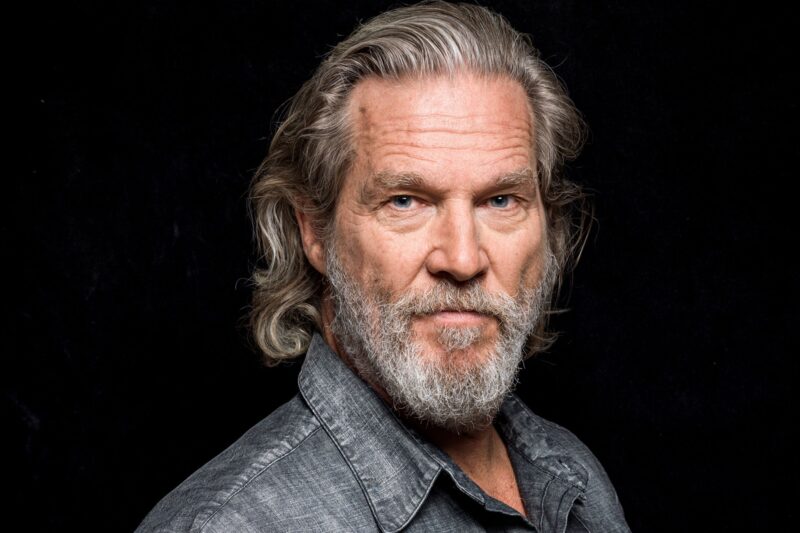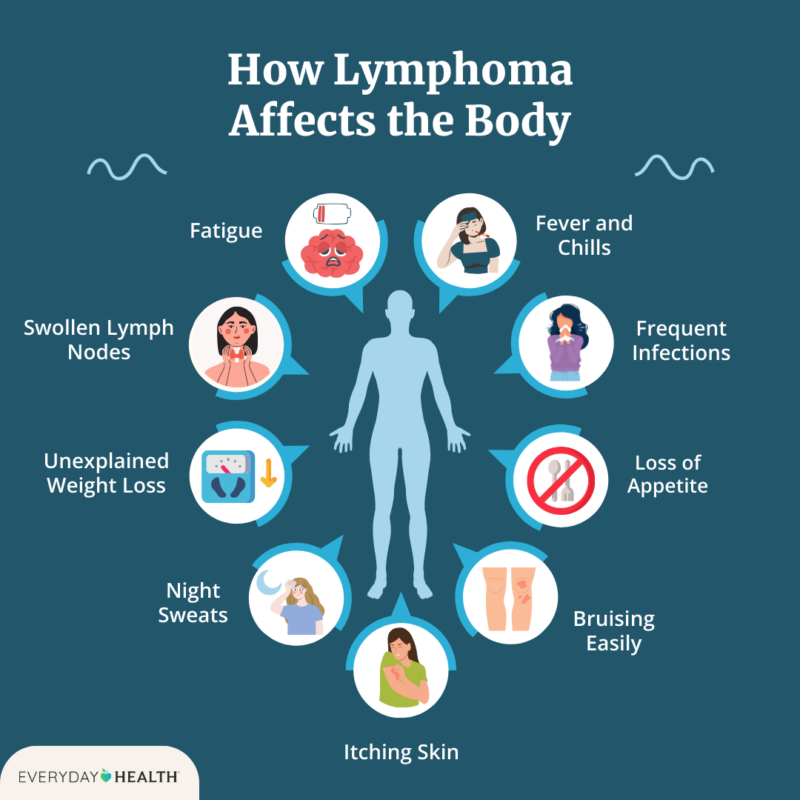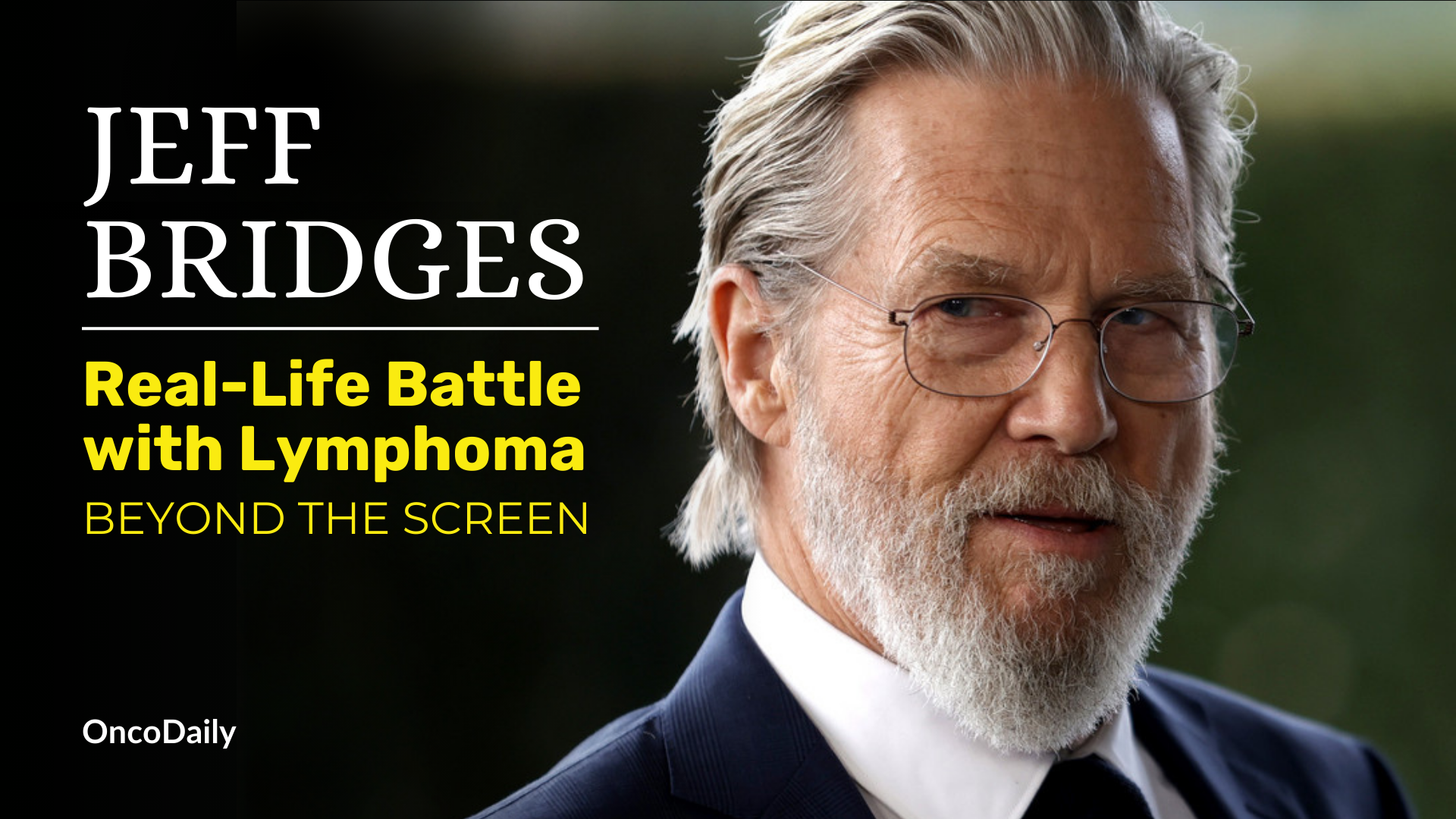Jeff Bridges, the Academy Award-winning actor best known for his roles in “The Big Lebowski” and “Crazy Heart,” was diagnosed with lymphoma in October 2020. This type of blood cancer affects the lymphatic system, and Jeff Bridges’ lymphoma diagnosis quickly gained public attention. By openly sharing his experience— from symptoms like unexplained weight loss and fatigue to undergoing chemotherapy and immunotherapy—Jeff Bridges has raised significant awareness about lymphoma and the importance of early detection. His battle against lymphoma and positive outlook make Jeff Bridges’ story both inspiring and a valuable lesson in resilience, health advocacy, and the role of a strong support system.

How Did Jeff Bridges Get Diagnosed with Lymphoma?
Jeff Bridges’ lymphoma diagnosis came after he noticed symptoms like significant weight loss and extreme fatigue. At first, he thought it could be COVID-19, but tests soon confirmed the presence of non-Hodgkin lymphoma. This emphasizes the importance of paying close attention to unusual symptoms and seeking medical advice early. Jeff Bridges’ lymphoma journey shows how vital early detection is for effective treatment and better outcomes.
Symptoms
Jeff Bridges experienced significant weight loss, fatigue, and swelling, which led to his lymphoma diagnosis. These symptoms are common in lymphoma:
- Fatigue: Affects up to 80% of lymphoma patients, often due to the body’s response to cancer or anemia (source: American Cancer Society).
- Weight Loss: About 40% of cancer patients experience unexplained weight loss, signaling serious health issues (source: National Cancer Institute).
- Swelling: Swollen lymph nodes are a classic sign, occurring in areas like the neck or groin, and can be painless (source: American Cancer Society).
Early detection is vital; the five-year survival rate for lymphoma can exceed 90% if caught early (source: Lymphoma Research Foundation). Anyone experiencing persistent symptoms should consult a healthcare professional.

What Were Jeff Bridges’ Initial Reactions to His Diagnosis?
When Jeff Bridges learned about his lymphoma diagnosis, he was initially shocked and overwhelmed by emotions. He expressed gratitude for the unwavering support from his family and friends, but also shared his fears about his health and the future. Jeff Bridges found solace in maintaining a positive attitude and often used humor to cope. He felt a responsibility to share his lymphoma journey to raise awareness about the importance of early detection. His reaction, filled with both vulnerability and resilience, resonated with many fans who followed his battle against lymphoma.
What was the Prognosis?
Jeff Bridges was diagnosed with non-Hodgkin lymphoma, specifically the follicular subtype, which is generally considered to be a slow-growing cancer. While the exact stage of his lymphoma at diagnosis wasn’t publicly detailed, non-Hodgkin lymphoma can vary widely in aggressiveness and treatment response.
In terms of prognosis, non-Hodgkin lymphoma has a five-year survival rate that varies significantly depending on factors like the specific subtype and stage at diagnosis. For example, localized cases can have survival rates above 90%, while more advanced stages may see rates drop to around 60-70% (source: American Cancer Society).
Bridges’ openness about his journey and treatment reflects a hopeful outlook, especially given the advances in lymphoma treatment options. Many patients respond well to therapies, which can lead to remission even in cases that are initially more advanced. Overall, while individual prognoses can vary, early detection and personalized treatment plans often lead to favorable outcomes.
What Treatments Did Jeff Bridges Undergo?
Jeff Bridges’ lymphoma treatment included a combination of chemotherapy and immunotherapy. He underwent the CHOP chemotherapy regimen, which involved drugs like cyclophosphamide, doxorubicin, vincristine, and prednisone. He also received Rituximab, an immunotherapy drug that specifically targets cancerous B-cells. Jeff Bridges’ chemotherapy for lymphoma was a crucial part of his treatment plan and helped manage the cancer effectively.
Chemotherapy
Jeff Bridges underwent the CHOP chemotherapy regimen, which includes cyclophosphamide, doxorubicin, vincristine, and prednisone. He typically received multiple cycles every 21 days, often totaling 6-8 cycles.
Side Effects:
- Nausea and Vomiting: Managed with anti-nausea medications.
- Fatigue: Due to lower red blood cell counts.
- Hair Loss: Common with chemotherapy.
- Increased Infection Risk: Resulting from reduced white blood cells.
- Mouth Sores and Appetite Changes: Affecting nutrition.
Coping Mechanisms:
- Physical: Focused on nutrition, hydration, and light exercise.
- Emotional: Found support from family and friends, used humor, and raised awareness about lymphoma.
Expert Insights:
Chemotherapy is a standard treatment for lymphoma because it effectively targets rapidly dividing cancer cells. The CHOP regimen combines different drugs to enhance effectiveness and can be tailored to individual patient needs, improving overall outcomes (source: American Cancer Society; National Cancer Institute).
Radiation Therapy
In Jeff Bridges’ treatment plan, radiation therapy targeted specific areas of lymphoma, particularly swollen lymph nodes or tumors not fully responding to chemotherapy.
Purpose of Radiation Therapy:
- Destruction of Cancer Cells: It helps eliminate localized disease and complements chemotherapy by addressing residual cancer.
Complementary Treatments:
- Immunotherapy: Drugs like Rituximab may have been used to boost the immune response.
- Targeted Therapy: Aimed at specific cancer cell growth factors.
- Lifestyle Modifications: Nutritional support and stress management can enhance overall well-being.
This combination approach aims to effectively manage lymphoma and improve outcomes.
How Did Jeff Bridges Overcome Lymphoma?
He relied on strong support from family and friends, which provided crucial encouragement throughout his journey. Bridges employed strategies such as maintaining a positive outlook, using humor to cope, and engaging in creative outlets like music and writing. By sharing his experiences, he raised awareness about lymphoma and fostered connections with others facing similar challenges, exemplifying how resilience can transform adversity into opportunities for growth and advocacy.
Support from Family and Friends
Jeff Bridges’ family, especially his wife, Susan, and their children, provided essential emotional and physical support during his battle with lymphoma.
Emotional Support: Susan was a constant source of encouragement, helping him maintain a positive outlook. Bridges noted,
“I couldn’t have done this without her. She kept me grounded and reminded me what was important.”
Physical Support: His children actively participated in his care, accompanying him to appointments and sharing joyful moments. Bridges recalled how his daughter surprised him with a homemade meal, turning an ordinary evening into a cherished family gathering.
Overall, this strong support network was crucial in helping Bridges face his diagnosis, illustrating the profound impact of family during challenging times.

Mental and Emotional Challenges
Jeff Bridges faced significant psychological challenges after his lymphoma diagnosis, grappling with fear and uncertainty. To maintain his mental health, he employed several strategies:
- Positive Mindset: He focused on optimism, recognizing the importance of a hopeful outlook.
- Humor and Creativity: Engaging in music and writing helped him express emotions and find joy during tough times.
- Open Dialogue: Bridges openly discussed his struggles, emphasizing that acknowledging fears was crucial for coping.
In interviews, he shared, “I had my moments of fear, but I also found strength in the love around me.” His experience highlighted the importance of resilience and support, ultimately inspiring others facing similar challenges.
How Did Advocacy and Public Awareness Help?
Jeff Bridges has utilized his cancer experience with lymphoma to engage in public speaking and advocacy, raising awareness about cancer and the importance of early detection. His efforts include participating in awareness campaigns to educate the public and destigmatize cancer conversations, supporting fundraising initiatives for cancer research, and sharing his personal journey in interviews to connect with others facing similar challenges. Bridges’ advocacy provides hope and encouragement to patients and their families, highlighting the significance of community support and ongoing research in the fight against cancer.
Public Speaking and Advocacy
Jeff Bridges has actively engaged in public speaking and advocacy since his lymphoma diagnosis, focusing on raising awareness about cancer and the critical importance of early detection.
Advocacy Efforts
- Awareness Campaigns: Bridges participates in initiatives aimed at educating the public about lymphoma and destigmatizing conversations around cancer, helping to foster a supportive environment for patients.
- Fundraising: He supports various organizations dedicated to cancer research and patient care, promoting fundraising events to bolster these efforts.
- Personal Stories: By sharing his journey through interviews and public appearances, Bridges connects with others who face similar challenges, emphasizing the emotional aspects of treatment.
Impact
Bridges’ advocacy work serves to provide hope and encouragement to patients and their families, stressing the importance of community support and the need for continued research. His initiatives inspire others to share their experiences and seek help, cultivating solidarity in the fight against cancer.

Collaborations with Health Organizations
Jeff Bridges has partnered with various health organizations to raise awareness and funds for lymphoma research, significantly impacting the cancer community.
Specific Campaigns
- Lymphoma Research Foundation (LRF): As part of his ongoing advocacy, Bridges has worked closely with the Lymphoma Research Foundation, participating in educational events and campaigns aimed at improving public understanding of the disease. His involvement in their Lymphoma Walks has helped raise funds for research and support services for lymphoma patients.
- Stand Up to Cancer Telecast: Bridges participated in the Stand Up to Cancer telecast, a star-studded event that raises millions of dollars for cancer research. His appearance helped raise awareness for lymphoma research specifically, and his personal story connected deeply with viewers, encouraging donations to fund breakthrough cancer treatments.
- Interviews and Media Appearances: Jeff Bridges has shared his lymphoma journey in high-profile interviews, such as on The Tonight Show and NPR, where he discussed the emotional and physical aspects of battling cancer. By opening up about his treatment, side effects, and recovery, he provided an intimate look at what it means to live with cancer, encouraging others to seek early diagnosis and not be afraid to talk about their own experiences.
Impact on Public Perception and Health Outcomes
Bridges’ advocacy has improved public perception of lymphoma, reducing stigma and promoting understanding. By sharing his journey, he encourages early diagnosis and treatment, which are crucial for effective cancer management. His efforts have contributed to increased awareness and support for ongoing research, fostering a stronger community around lymphoma advocacy.
What Is Jeff Bridges’ Life Like After Cancer?
Post-treatment, Jeff Bridges has actively continued his advocacy for health issues, particularly cancer awareness and early detection. He participates in various campaigns and public speaking events to share his journey and inspire others. While managing ongoing health challenges, Bridges prioritizes a healthy lifestyle that includes nutrition, exercise, and mental health practices. He has successfully returned to acting with roles like in the TV series “The Old Man,” demonstrating resilience and a strong commitment to his craft. Overall, Bridges’ life after lymphoma reflects his dedication to advocacy, health management, and personal well-being.
Continued Advocacy Work
Jeff Bridges cancer diagnosis made him committed to advocating for lymphoma awareness and cancer research through various initiatives and public appearances.
Recent Initiatives
- Awareness Campaigns: He partners with organizations like the Lymphoma Research Foundation to educate the public about lymphoma symptoms and the importance of early detection.
- Fundraising Events: Bridges actively supports fundraising efforts, raising essential funds for cancer research and better treatment options.
- Public Speaking Engagements: He speaks at health conferences and community events, sharing his personal journey and encouraging conversations about cancer.
Public Appearances
Bridges has participated in numerous interviews and health summits, advocating for increased funding for cancer research and destigmatizing the illness through candid discussions.
Through these efforts, Jeff Bridges continues to make a significant impact on lymphoma awareness and inspire others in the fight against cancer.
Ongoing Health Challenges
Jeff Bridges faces several ongoing health challenges from his lymphoma and its treatment, including:
- Fatigue: Persistent fatigue is managed with a balance of rest and moderate exercise.
- Immune System Monitoring: Regular check-ups help monitor his immune health.
- Physical Ailments: He experiences joint pain, which he manages through gentle exercises and yoga.
Lifestyle Adjustments
To cope, Bridges has made key lifestyle adjustments:
- Nutrition: He prioritizes a healthy diet rich in whole foods.
- Mindfulness: Practices like meditation help manage stress.
- Activity Moderation: He balances commitments to allow time for rest and recovery.
These strategies enable Bridges to navigate his ongoing health challenges while focusing on overall well-being.
What Causes Lymphoma?
Lymphoma is a complex cancer of the lymphatic system, influenced by genetic, lifestyle, and environmental factors. Genetic predispositions, such as mutations in TP53 and family history, account for 20-30% of cases. Lifestyle factors, including diet, obesity, physical inactivity, smoking, and alcohol consumption, play significant roles in risk. Environmental exposures to infections (e.g., Epstein-Barr Virus, HIV) and chemicals (e.g., pesticides) also contribute. Recent research underscores a multi-hit model, highlighting the interplay between these factors. Understanding these causes can guide prevention and early intervention strategies.
Genetic Factors
Genetics significantly influences lymphoma risk through familial patterns and specific genetic mutations. Individuals with a family history of lymphoma are at increased risk; studies show that first-degree relatives have a 2-4 times higher likelihood of developing the disease (Cancer Epidemiology, Biomarkers & Prevention).
Key genetic syndromes include Li-Fraumeni Syndrome and Bloom Syndrome, both linked to increased lymphoma incidence due to mutations in TP53 and BLM, respectively. Genome-wide association studies (GWAS) have identified several SNPs associated with non-Hodgkin lymphoma, highlighting genetic predispositions (Nature Genetics).
Additionally, genetic variations affecting immune system function and epigenetic changes may further increase susceptibility. Understanding these genetic factors is crucial for early detection and targeted prevention strategies (American Journal of Hematology).
Lifestyle and Environmental Factors
Lifestyle choices and environmental factors significantly influence lymphoma risk. Here’s a concise overview of how these elements contribute to risk, along with mitigation strategies.
Lifestyle Choices
1. Smoking
- Risk Contribution: Current smokers have a 30-50% higher risk of non-Hodgkin lymphoma (NHL) compared to non-smokers (Amato et al., 2019).
- Mitigation Tip: Quitting smoking is vital; utilize quitlines and support groups.
2. Diet
- Risk Contribution: Diets high in processed foods are linked to higher NHL risk. High fruit and vegetable intake may lower risk by about 20% (Kaklamani et al., 2019).
- Mitigation Tip: Focus on a balanced diet rich in fruits, vegetables, and whole grains.
3. Physical Activity
- Risk Contribution: Sedentary lifestyles and obesity increase NHL risk by approximately 30% (López-Muñoz et al., 2018).
- Mitigation Tip: Aim for at least 150 minutes of moderate exercise weekly and maintain a healthy weight.
Environmental Factors
1. Exposure to Toxins
- Risk Contribution: Agricultural workers exposed to pesticides have a 30% higher risk of NHL (Pérez et al., 2020).
- Mitigation Tip: Limit exposure to chemicals and advocate for safety regulations.
2. Infections
- Risk Contribution: Infections like Epstein-Barr virus (EBV) are associated with specific lymphomas.
- Mitigation Tip: Practice good hygiene, get vaccinated, and manage chronic infections.
How Can Lymphoma Be Prevented?
Preventive measures for lymphoma involve lifestyle modifications, dietary choices, and awareness of symptoms. Key strategies include quitting smoking, as tobacco use increases risk (American Cancer Society), and engaging in regular exercise, aiming for at least 150 minutes of moderate activity weekly (World Health Organization). A healthy diet rich in fruits, vegetables, whole grains, and lean proteins, while limiting processed foods, is also recommended (American Institute for Cancer Research). Additionally, awareness of family history and potential toxin exposures is crucial. The Leukemia & Lymphoma Society highlights the importance of maintaining a healthy weight and managing chronic infections. Implementing these strategies can enhance overall health and potentially reduce lymphoma risk.
Regular Screenings
Regular health screenings for lymphoma focus on early detection through awareness of symptoms, as there are no specific screening tests. Key evaluations include:
- Physical Examinations: Healthcare providers check for swollen lymph nodes and other symptoms during routine check-ups (American Cancer Society).
- Blood Tests: Routine tests can reveal abnormalities, such as elevated lactate dehydrogenase (LDH) levels, prompting further investigation (National Cancer Institute).
- Imaging Tests: CT or PET scans may be used if lymphoma is suspected based on symptoms (Leukemia & Lymphoma Society).
- Biopsies: A definitive method for diagnosing lymphoma, performed if imaging indicates potential disease (Mayo Clinic).
Importance of Early Detection
Early diagnosis significantly improves treatment outcomes. The 5-year survival rate for localized lymphoma is approximately 85%, compared to about 60% for advanced stages (American Cancer Society). Regular check-ups and awareness of symptoms are crucial for timely intervention, enhancing prognosis and treatment success.
Lifestyle Changes
To reduce the risk of lymphoma, consider the following lifestyle changes:
1. Avoid Carcinogens
- Limit Toxin Exposure: Reduce contact with pesticides and industrial chemicals; use protective gear when necessary.
- Quit Smoking: Avoid tobacco products to significantly lower risk.
2. Maintain a Healthy Diet
- Balanced Nutrition: Focus on a diet rich in fruits, vegetables, whole grains, and lean proteins. Aim for at least five servings of fruits and vegetables daily (American Institute for Cancer Research).
- Limit Processed Foods: Reduce intake of processed foods and red meats.
3. Stay Physically Active
- Regular Exercise: Engage in at least 150 minutes of moderate exercise weekly to maintain a healthy weight (World Health Organization).
4. Practice Good Hygiene
- Prevent Infections: Maintain hygiene and stay updated on vaccinations to manage infections linked to lymphoma.
5. Regular Health Check-ups
- Routine Screenings: Schedule regular check-ups to identify risk factors and potential symptoms early.
Implementing these changes can help lower lymphoma risk and improve overall health.
Dietary Recommendations
To help prevent lymphoma, consider the following dietary recommendations that focus on boosting immune health and reducing inflammation, along with relevant sources and statistics:
- Fruits and Vegetables
- Berries: Rich in antioxidants like vitamin C and flavonoids, which help combat inflammation (American Institute for Cancer Research).
- Leafy Greens: Spinach, kale, and collard greens provide essential nutrients and anti-inflammatory compounds (National Cancer Institute).
- Whole Grains
- Oats, Quinoa, and Brown Rice: High in fiber, these foods support gut health and may reduce inflammation (Harvard Health).
- Healthy Fats
- Omega-3 Fatty Acids: Found in fatty fish (like salmon and mackerel), flaxseeds, and walnuts, omega-3s are known for their anti-inflammatory properties (American Heart Association).
- Olive Oil: Extra virgin olive oil is rich in antioxidants and healthy monounsaturated fats (European Journal of Nutrition).
- Nuts and Seeds
- Almonds and Walnuts: Packed with healthy fats, fiber, and antioxidants that support immune health (Journal of Nutrition).
- Chia and Flaxseeds: Good sources of omega-3s and fiber, which help reduce inflammation (Nutrition Reviews).
- Legumes
- Beans and Lentils: High in protein and fiber, they promote gut health and help reduce inflammation (American Diabetes Association).
- Spices and Herbs
- Turmeric: Contains curcumin, a powerful anti-inflammatory compound; studies suggest it may reduce cancer risk (Journal of Medicinal Food).
- Garlic: Known for its immune-boosting properties and potential anti-cancer effects (Cancer Research).
- Lean Proteins
- Skinless Poultry and Fish: These healthier protein options support overall health without excess saturated fat (American Cancer Society).
- Limit Processed Foods
- Reduce Sugar and Refined Carbohydrates: Minimize intake of sugary snacks, sodas, and processed foods that can promote inflammation (World Health Organization).
Statistics
Research indicates that a diet high in fruits and vegetables can lower the risk of many cancers, including lymphomas. A study found that individuals consuming five or more servings of fruits and vegetables daily had a 20% lower risk of developing non-Hodgkin lymphoma compared to those consuming fewer (American Institute for Cancer Research).
FAQ
What Type of Cancer Does Jeff Bridges Have?
Jeff Bridges was diagnosed with non-Hodgkin lymphoma, specifically the follicular subtype. This type of lymphoma is slow-growing and affects the lymphatic system, which is part of the body’s immune system.
How Did Jeff Bridges Discover He Had Lymphoma?
Jeff Bridges discovered he had lymphoma after experiencing unexplained weight loss, fatigue, and swollen lymph nodes. He initially suspected COVID-19, but further testing revealed lymphoma. This highlights the importance of seeing a doctor when symptoms persist.
What Treatments Did Jeff Bridges Undergo for Lymphoma?
Jeff Bridges underwent a combination of chemotherapy and immunotherapy. His treatment included the CHOP chemotherapy regimen and Rituximab, a drug that targets cancerous B-cells, aiming to boost the immune system.
How Long Did Jeff Bridges’ Chemotherapy Last?
Jeff Bridges’ chemotherapy treatment typically lasted 6-8 cycles, with each cycle taking place every 21 days. This is a standard duration for treating lymphoma with the CHOP regimen.
Did Jeff Bridges Experience Side Effects from Lymphoma Treatment?
Yes, Jeff Bridges experienced common chemotherapy side effects, including nausea, fatigue, hair loss, and increased infection risk. These side effects are common among lymphoma patients undergoing chemotherapy and immunotherapy.
What Is Jeff Bridges’ Prognosis After His Lymphoma Diagnosis?
Jeff Bridges’ prognosis for non-Hodgkin lymphoma is favorable due to early detection and treatment. The five-year survival rate for localized cases of follicular lymphoma exceeds 90%, especially with modern treatments like chemotherapy and immunotherapy.
How Has Jeff Bridges Advocated for Cancer Awareness?
Jeff Bridges has become a strong advocate for cancer awareness, particularly emphasizing the importance of early detection. He has used his platform to raise awareness through interviews, public speaking, and collaborations with cancer foundations.
What Is Jeff Bridges’ Health Like After Lymphoma?
After completing treatment, Jeff Bridges continues to prioritize his health and recovery. He manages lingering effects such as fatigue and focuses on a balanced lifestyle with proper nutrition, moderate exercise, and regular health check-ups.
What Is Lymphoma, and How Is It Treated?
Lymphoma is a type of cancer that affects the lymphatic system, which includes the lymph nodes, spleen, and bone marrow. Treatment typically involves chemotherapy, radiation therapy, and sometimes immunotherapy. Early detection significantly improves outcomes.
Can Lymphoma Be Prevented?
While there is no guaranteed prevention for lymphoma, certain lifestyle changes—such as quitting smoking, maintaining a healthy diet, regular exercise, and minimizing exposure to toxins—can help reduce the risk of developing non-Hodgkin lymphoma. Regular medical check-ups are also essential for early detection.
Written by Aharon Tsaturyan, MD
